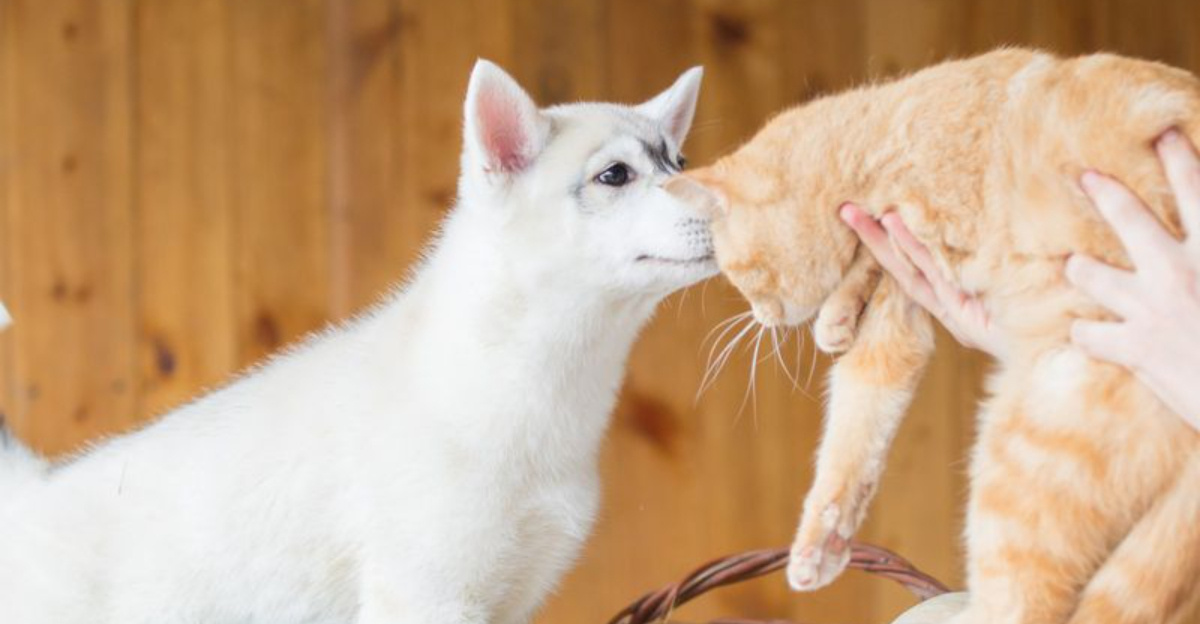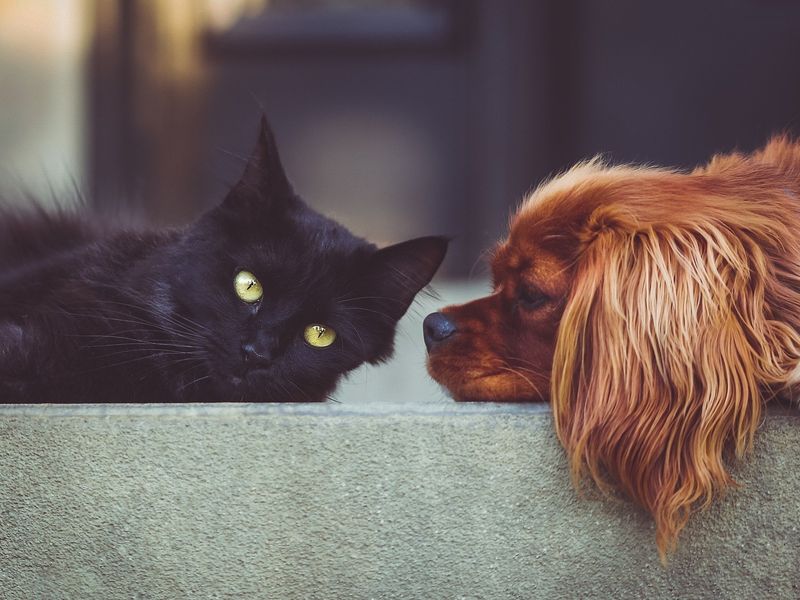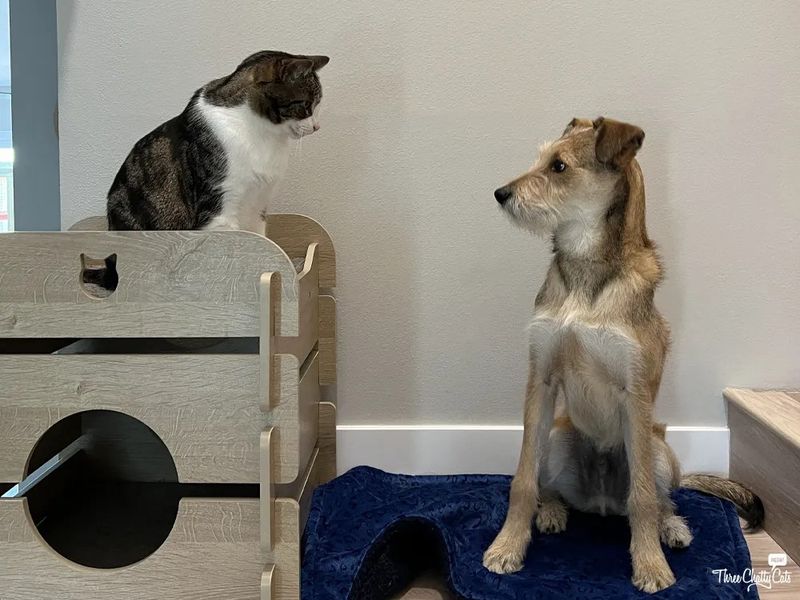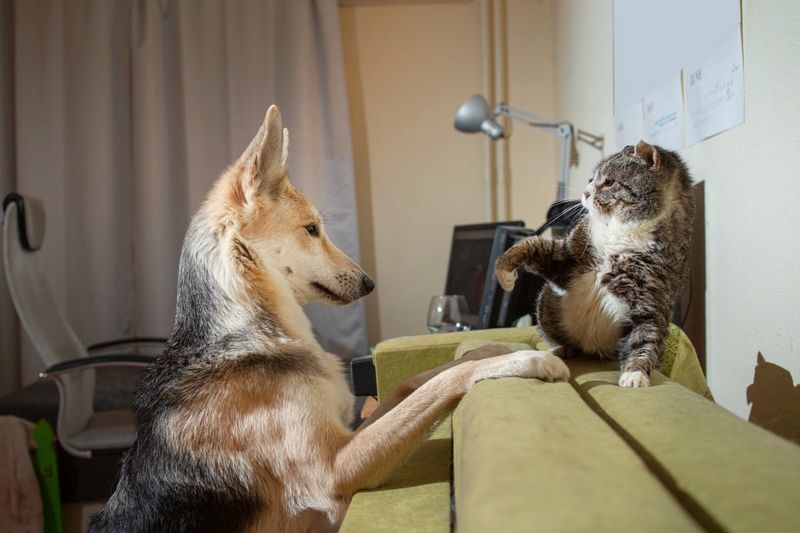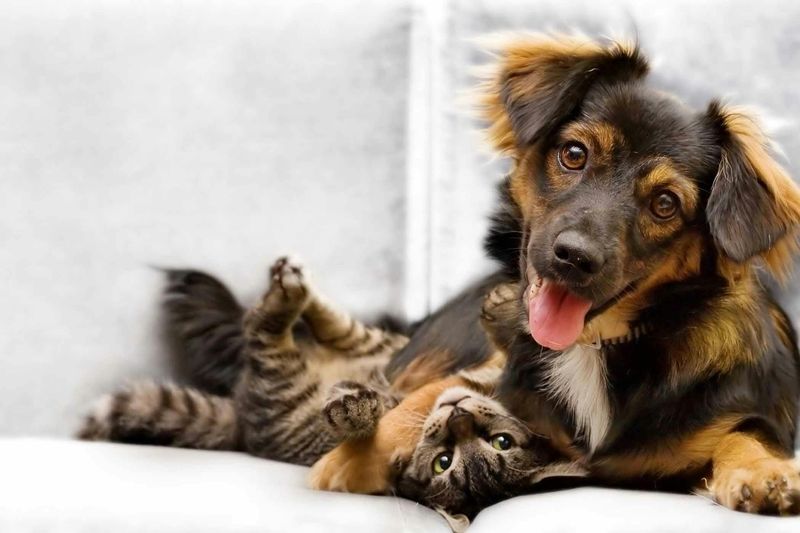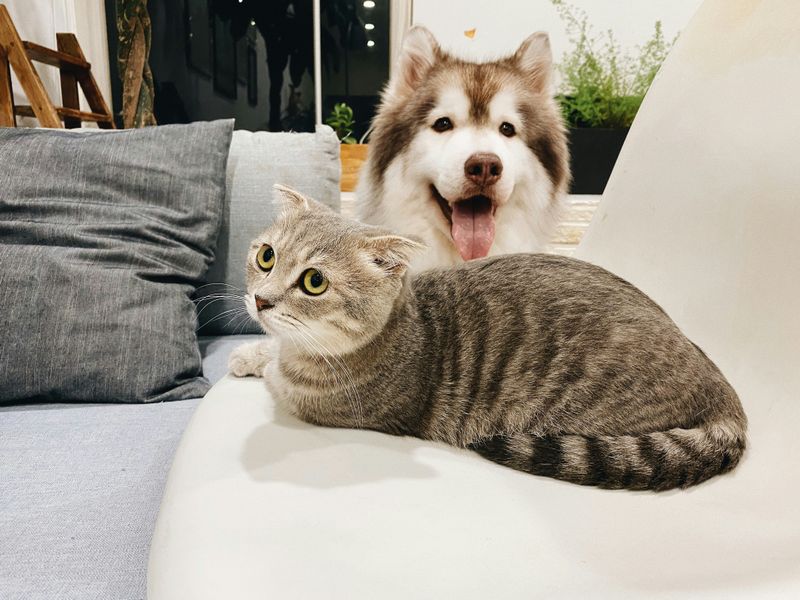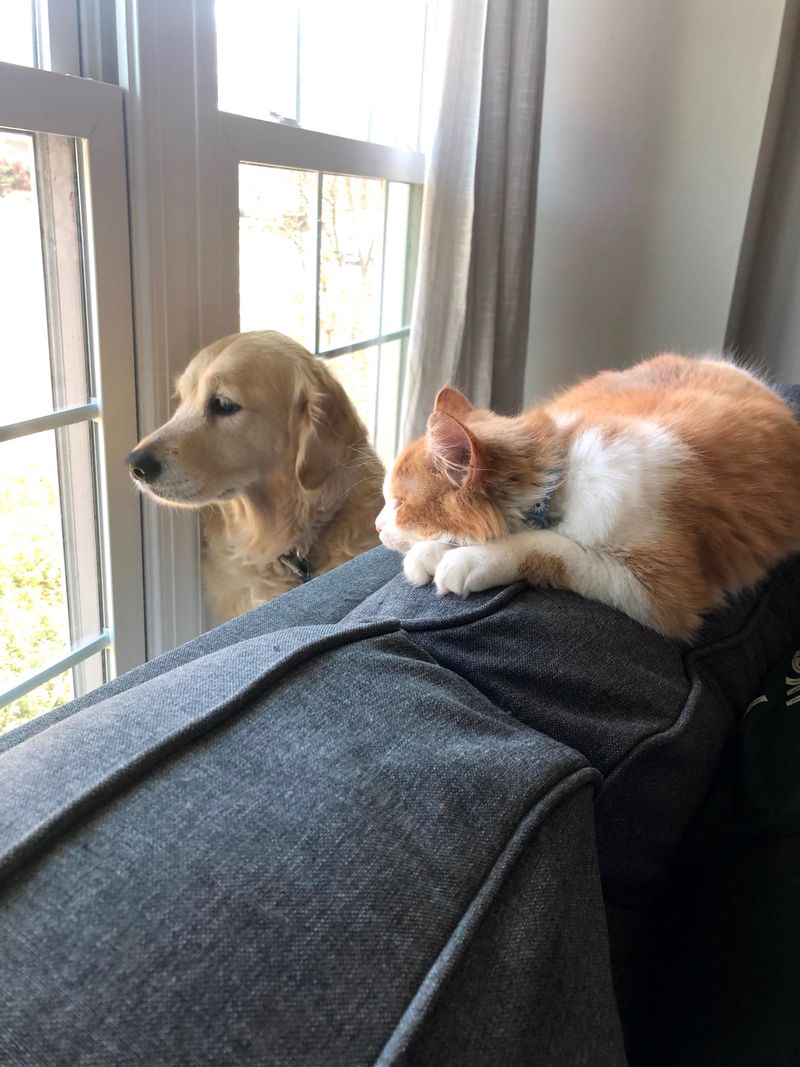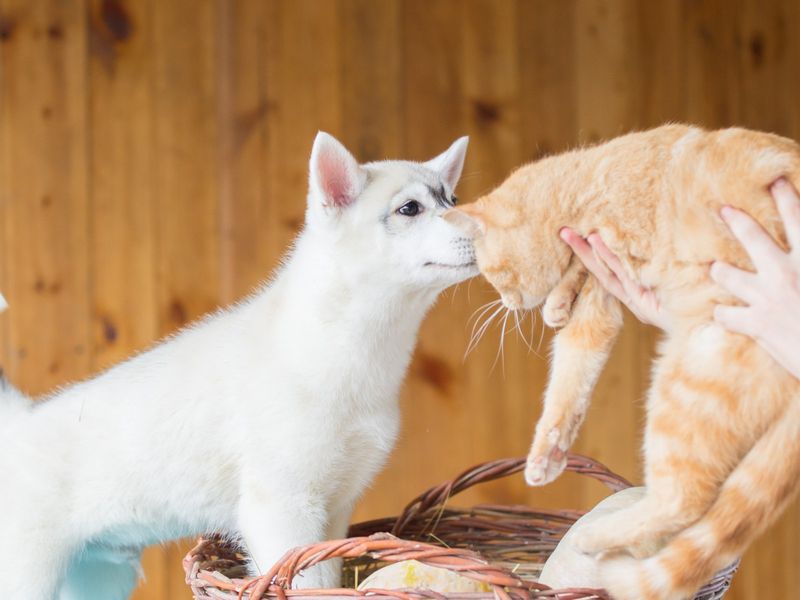📖 Table of Content:
- 1. Create Safe Spaces for Each Pet
- 2. Controlled First Introductions Matter
- 3. Match Energy Levels When Adopting
- 4. Maintain Separate Feeding Stations
- 5. Exercise Your Dog Thoroughly
- 6. Train Basic Commands Consistently
- 7. Respect Your Cat’s Communication Signals
- 8. Groom Your Pets Together
- 9. Be Patient and Manage Your Expectations
- 10. Start Young When Possible
Cats and dogs are often seen as natural opposites, each with their own way of communicating and claiming space. Introducing them to one another can stir up tension, especially if one feels threatened or overwhelmed. Without patience and guidance, household harmony may seem out of reach.
Clashes over territory, food, and attention are common when pets aren’t properly introduced or managed. Some may hiss or bark, others may retreat or lash out—all signs of stress that need careful handling. The key is understanding both species’ behaviors and setting clear boundaries early on.
Despite the differences, many cats and dogs can form strong bonds over time. With structure, consistency, and positive reinforcement, peaceful coexistence is absolutely possible. When done right, the result is a balanced home filled with mutual respect—and sometimes even friendship.
1. Create Safe Spaces for Each Pet
Cats need vertical escape routes where dogs can’t follow. Install cat shelves, tall cat trees, or designate high furniture as feline-only zones. These retreats give your cat confidence to explore shared spaces, knowing safety is just a jump away.
Dogs benefit from their own sanctuary too. A crate with comfy bedding or a gated room can serve as their personal domain. These spaces should contain their favorite toys and be off-limits to feline family members.
Respecting each pet’s need for personal space prevents stress-related behavior problems and builds trust between you and your animals.
2. Controlled First Introductions Matter
First impressions last a lifetime in the animal world. Keep your dog on a leash during initial meetings and give your cat freedom to approach or retreat. Never force interaction between unwilling pets—this creates negative associations that are hard to overcome.
Baby gates work wonders during the introduction phase. They allow pets to see and smell each other without physical contact. Exchange bedding between pets before face-to-face meetings so they become familiar with each other’s scent.
Reward calm behavior with treats and praise. This positive reinforcement teaches both animals that good things happen when they’re together.
3. Match Energy Levels When Adopting
A high-energy border collie paired with a senior cat who loves napping creates instant conflict. Consider personality and energy levels when choosing pets to share your home. Active cats often tolerate playful dogs better than sedentary felines do.
Breed tendencies matter too. Some dog breeds have strong prey drives that make cat cohabitation challenging. Greyhounds, huskies, and terriers often need more training to overcome their instinct to chase small furry creatures.
Age also affects compatibility. Middle-aged or older animals with established, calm personalities might adapt more easily to a new species companion than very young or very old pets.
4. Maintain Separate Feeding Stations
Food competition causes serious conflicts between cats and dogs. Dogs typically eat quickly while cats prefer grazing throughout the day, making shared feeding areas problematic. Place cat food in elevated locations that dogs can’t reach.
Scheduled feeding times help manage multi-pet households. Feed your dog in a separate room or crate to prevent food stealing. Consider microchip-activated cat feeders that only open for your cat’s implanted chip.
Never feed pets near each other during the early stages of introduction. Food-related aggression can develop quickly and becomes difficult to resolve once established.
5. Exercise Your Dog Thoroughly
A tired dog is a well-behaved dog. Daily physical exercise reduces the likelihood of your dog chasing or harassing your cat out of boredom or excess energy. Long walks, play sessions, or fetch games help burn that energy constructively.
Mental stimulation counts too. Puzzle toys, training sessions, and nose work games tire your dog’s brain, making them less likely to see your cat as an entertainment option. Twenty minutes of mental exercise can be as effective as an hour of physical activity.
Regular exercise also strengthens your bond with your dog and reinforces your role as pack leader, making them more responsive to correction if they misbehave around your cat.
6. Train Basic Commands Consistently
Reliable recall and a solid “leave it” command can prevent cat chasing before it starts. Practice these commands daily with your dog, gradually adding distractions that mimic cat movements. Use high-value treats that outrank the excitement of chasing a cat.
Clicker training works exceptionally well for multi-pet households. The distinct sound marks correct behavior instantly, helping your dog understand exactly what earned the reward. Start in distraction-free environments before practicing near your cat.
Never punish your dog for showing interest in the cat. Instead, redirect attention and reward alternative behaviors. Punishment creates negative associations with the cat’s presence rather than teaching appropriate interaction.
7. Respect Your Cat’s Communication Signals
Cats communicate primarily through body language. Dilated pupils, flattened ears, and a swishing tail indicate stress or fear. Teach children and adults to recognize these warning signs and give cats space when they display them.
Hissing and growling aren’t bad behaviors—they’re important communications that should be respected. When your cat hisses at the dog, intervene by removing the dog, not scolding the cat. This validates your cat’s boundaries and builds trust.
Slow blinking, kneading, and a raised tail with a slight curve at the tip show contentment. These signals mean your cat feels safe, even with the dog nearby—a major milestone worth celebrating!
8. Groom Your Pets Together
Brushing sessions can become bonding opportunities for the whole family. Start by grooming each pet separately in the same room, then gradually move them closer as they become comfortable. The pleasant sensations of being brushed create positive associations with being near each other.
Shared scent is important in animal relationships. After brushing one pet, use the same brush (or your hands) to transfer some scent to the other pet. This mingling of smells helps them recognize each other as part of the same family group.
Keep sessions short and positive at first. Five minutes of calm grooming followed by treats builds better associations than longer sessions that might lead to stress or overstimulation.
9. Be Patient and Manage Your Expectations
Rome wasn’t built in a day, and neither are pet friendships. The adjustment period can take weeks or even months, depending on your pets’ personalities and previous experiences. Success might look different from what you imagined—peaceful coexistence rather than cuddling.
Progress often follows a “two steps forward, one step back” pattern. After initial improvement, you might see temporary setbacks following changes in routine, household stress, or after veterinary visits. These setbacks are normal and usually temporary.
Document small victories to maintain perspective. Today they ate ten feet apart without hissing; next month they might nap on opposite ends of the same couch. These incremental improvements add up over time.
10. Start Young When Possible
Puppies and kittens who grow up together often develop stronger bonds than older animals introduced later in life. Young animals haven’t yet formed strong species-specific behaviors or territorial instincts.
The socialization period for both species is crucial. Kittens between 2-7 weeks and puppies between 3-12 weeks are most receptive to new experiences. During this time, they’re like little sponges, absorbing information about what’s safe and normal in their world.
When that’s not possible, don’t worry! Adult animals can still learn to coexist peacefully with patience and proper introduction techniques.
